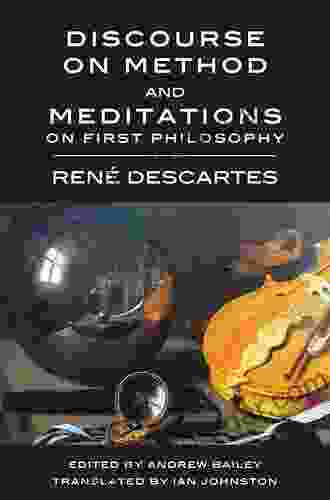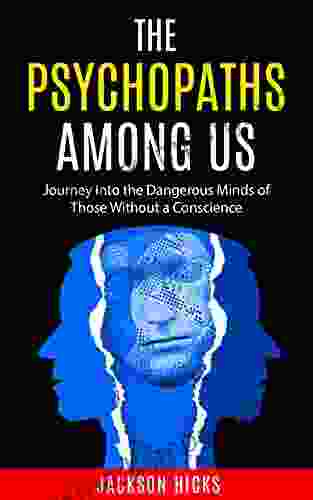The Conceptualization of Autism as Contact Disorder by Frankl Asperger: A Comprehensive Analysis

Autism, a complex neurodevelopmental disFree Download, has been the subject of extensive research and debate. One influential perspective on autism is the contact disFree Download theory, which proposes that individuals with autism have difficulty establishing and maintaining social connections. This theory was first proposed by Frankl Asperger, an Austrian pediatrician, in the 1940s.
5 out of 5
| Language | : | English |
| File size | : | 2363 KB |
| Text-to-Speech | : | Enabled |
| Screen Reader | : | Supported |
| Enhanced typesetting | : | Enabled |
| Print length | : | 346 pages |
Asperger's Conceptualization of Contact DisFree Download
Asperger believed that children with autism had a "genuine autistic disturbance" that prevented them from establishing normal social contact. He described them as having difficulties in understanding the intentions and emotions of others, as well as in expressing their own feelings. Asperger also noted that these children often exhibited repetitive behaviors and a restricted range of interests.
He labeled this condition "autistic psychopathy" and argued that it was a lifelong condition that could not be cured. However, he also believed that individuals with autism could learn to compensate for their difficulties and live fulfilling lives.
Evolution of the Contact DisFree Download Theory
Asperger's ideas were not widely accepted at the time, but they gained traction in the 1970s and 1980s. This was due in part to the work of Lorna Wing, who proposed a broader definition of autism that included Asperger's syndrome. Wing's work helped to dispel the myth that autism was a rare and severe condition, and it led to a greater understanding of the spectrum of autistic disFree Downloads.
The contact disFree Download theory has continued to be refined and expanded by researchers. Today, it is widely accepted that individuals with autism have difficulty with social communication and interaction. However, it is also recognized that autism is a complex disFree Download with a wide range of symptoms and presentations.
Implications for Diagnosis and Treatment
The contact disFree Download theory has had a significant impact on the diagnosis and treatment of autism. The diagnostic criteria for autism now include difficulties in social communication and interaction, and clinicians are trained to look for these difficulties when evaluating children for autism.
Treatment for autism typically focuses on improving social communication and interaction skills. This can be done through a variety of therapies, such as speech therapy, social skills training, and occupational therapy.
Controversies and Criticisms
The contact disFree Download theory has been criticized by some researchers, who argue that it is too narrow and does not account for the full range of symptoms that can be seen in autism. Some critics also argue that the label of "contact disFree Download" can be stigmatizing and may lead to people with autism being labeled as "unsocial" or "antisocial."
Despite these criticisms, the contact disFree Download theory remains a valuable framework for understanding autism. It provides a clear and concise explanation of the social difficulties that can be seen in autism, and it has led to the development of effective treatments.
The conceptualization of autism as contact disFree Download has been a major influence on our understanding and treatment of this complex neurodevelopmental disFree Download. Asperger's original ideas have been refined and expanded, and they continue to guide research and practice in the field of autism.

References
* Asperger, H. (1944). Die "Autistischen Psychopathen" im Kindesalter. Archiv für Psychiatrie und Nervenkrankheiten, 117(1),76-136. * Wing, L. (1981). Asperger's syndrome: A clinical account. Psychological Medicine, 11(1),115-129. * American Psychiatric Association (2013). Diagnostic and Statistical Manual of Mental DisFree Downloads, Fifth Edition. Arlington, VA: American Psychiatric Association.
5 out of 5
| Language | : | English |
| File size | : | 2363 KB |
| Text-to-Speech | : | Enabled |
| Screen Reader | : | Supported |
| Enhanced typesetting | : | Enabled |
| Print length | : | 346 pages |
Do you want to contribute by writing guest posts on this blog?
Please contact us and send us a resume of previous articles that you have written.
 Book
Book Novel
Novel Page
Page Chapter
Chapter Text
Text Story
Story Genre
Genre Reader
Reader Library
Library Paperback
Paperback E-book
E-book Magazine
Magazine Newspaper
Newspaper Paragraph
Paragraph Sentence
Sentence Bookmark
Bookmark Shelf
Shelf Glossary
Glossary Bibliography
Bibliography Foreword
Foreword Preface
Preface Synopsis
Synopsis Annotation
Annotation Footnote
Footnote Manuscript
Manuscript Scroll
Scroll Codex
Codex Tome
Tome Bestseller
Bestseller Classics
Classics Library card
Library card Narrative
Narrative Biography
Biography Autobiography
Autobiography Memoir
Memoir Reference
Reference Encyclopedia
Encyclopedia J M Barrie
J M Barrie Karl E Misulis
Karl E Misulis Mark Brewer
Mark Brewer J A Turley
J A Turley James R Hansen
James R Hansen Ian Kalman
Ian Kalman Ian Blair
Ian Blair Stuart Getty
Stuart Getty Lynn Rainville
Lynn Rainville Michael E Peterson
Michael E Peterson Jacques Futrelle
Jacques Futrelle Jacqueline V Lerner
Jacqueline V Lerner Sharon Hewitt Rawlette
Sharon Hewitt Rawlette Jake Bernstein
Jake Bernstein James Mcmanus
James Mcmanus Howard Suber
Howard Suber J C Burkesmith
J C Burkesmith Ian Sinclair
Ian Sinclair K F Long
K F Long Jeff Chang
Jeff Chang
Light bulbAdvertise smarter! Our strategic ad space ensures maximum exposure. Reserve your spot today!

 Jonathan FranzenThe Ducati Monster Bible: Unraveling the Secrets of a Legendary Motorcycle
Jonathan FranzenThe Ducati Monster Bible: Unraveling the Secrets of a Legendary Motorcycle Dakota PowellFollow ·2.4k
Dakota PowellFollow ·2.4k Joseph FosterFollow ·2.4k
Joseph FosterFollow ·2.4k Jerry HayesFollow ·2.3k
Jerry HayesFollow ·2.3k Derek CookFollow ·11.3k
Derek CookFollow ·11.3k Bryan GrayFollow ·8.2k
Bryan GrayFollow ·8.2k Billy FosterFollow ·18k
Billy FosterFollow ·18k Larry ReedFollow ·17.7k
Larry ReedFollow ·17.7k Milton BellFollow ·8.1k
Milton BellFollow ·8.1k

 Mike Hayes
Mike HayesUnlock Your Nonprofit Potential: A Comprehensive Guide to...
: Embarking on the Path to Impactful...

 Cody Russell
Cody RussellUnlock the Secrets of Captivating Radio Programming:...
In the fiercely competitive world of...

 Aron Cox
Aron CoxUnveiling the Enchanting World of Beth Inspired Eye...
A Realm of Imagination and Wonder Embark on...

 Felix Carter
Felix CarterUnlock the Secrets of Legal Publishing with West Hartford...
West Hartford Legal Publishing, the renowned...

 Henry Hayes
Henry HayesUnveiling the Secrets of the Panama Papers: Exposing...
The Panama Papers is a groundbreaking...
5 out of 5
| Language | : | English |
| File size | : | 2363 KB |
| Text-to-Speech | : | Enabled |
| Screen Reader | : | Supported |
| Enhanced typesetting | : | Enabled |
| Print length | : | 346 pages |












